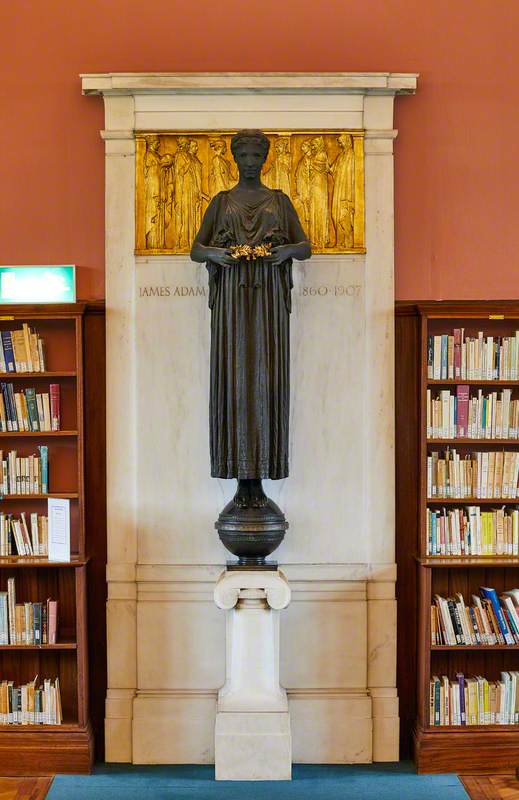
Text source: 'Artists in Britain Since 1945' by David Buckman (Art Dictionaries Ltd, part of Sansom & Company)
1874–1951
British, English

Text source: 'Artists in Britain Since 1945' by David Buckman (Art Dictionaries Ltd, part of Sansom & Company)
Ernest George Gillick was born in Bradford, Yorkshire, England on 19 November 1874. By the early 1880s his family had moved to Nottingham and in the 1891 England and Wales census, aged 16, his occupation was given as Desiner's Apprentice. He also attended evening classes at Nottingham School of Art and studied Thomas Meldrum (c.1856-?) In 1899 he was awarded a scholarship which enabled him to take classes in modelling with the Irish sculptor Oliver Sheppard (1865-1921) and then to study under Édouard Lantéri (1848-1917) at Royal College of Art London. In 1902 Gillick was awarded a travelling scholarship which he used to visit sites in Italy and spend some time in Paris.
Following his return to England, he embarked on a career as a freelance sculptor in London. He primarily focused on architectural and memorial sculpture. He was also a medallist.
In 1905 he married the sculptor and medallist Mary Tutin (1881-1965) with whom he sometimes collaborated.
Gillick exhibited frequently at the Royal Academy in London from 1904 to 1951, He also exhibited at the International Society of Sculptors, Painters and Gravers in London; Walker Art Gallery in Liverpool; and Royal Scottish Academy in Edinburgh. He participated in the 6th (1899) and 7th (1903) exhibitions of the Arts & Crafts Exhibition Society in London, and in the British Arts and Crafts Section of the Ghent International Exhibition in 1913.
He was elected an Associate of the Royal Academy (ARA) in 1935; an Associate of the Royal Society of British Sculptors (ARBS) in 1935; and a Fellow of the Royal Society of British Sculptors (FRBS) in 1938. He was also elected a member of the Art Workers Guild in 1916 and Master of the AWG in 1935; and was a member of the Dover Street Arts Club. Among the many awards he received was the Royal Society of British Sculptors Medal in 1935
Gillick's principal works include the pantheon of Welsh historical figures for Cardiff City Hall; the Frampton Memorial at St Paul’s Cathedral; memorials at Emmanuel College and Trinity College, Cambridge; the Harrison and Chemical Society’s Memorial at Burlington House, London; a memorial fountain to the novelist Ouidal in Bury St Edmunds; war memorial in Forest Row, East Sussex, Winchester College and to the Missing at Vis-en-Artois, France; the Polar Medal of 1904 and National Emergency (General Strike) medal of 1926, and medals for the Royal Mint, Royal Academy, Inner Temple, Kosciuszko Medal (with Mary Gillick); and the Lord Mayor’s Seal for the City of London
Gillick lived for most of his career in London where he died on 25 September 1951.
Text source: Art History Research net (AHR net)